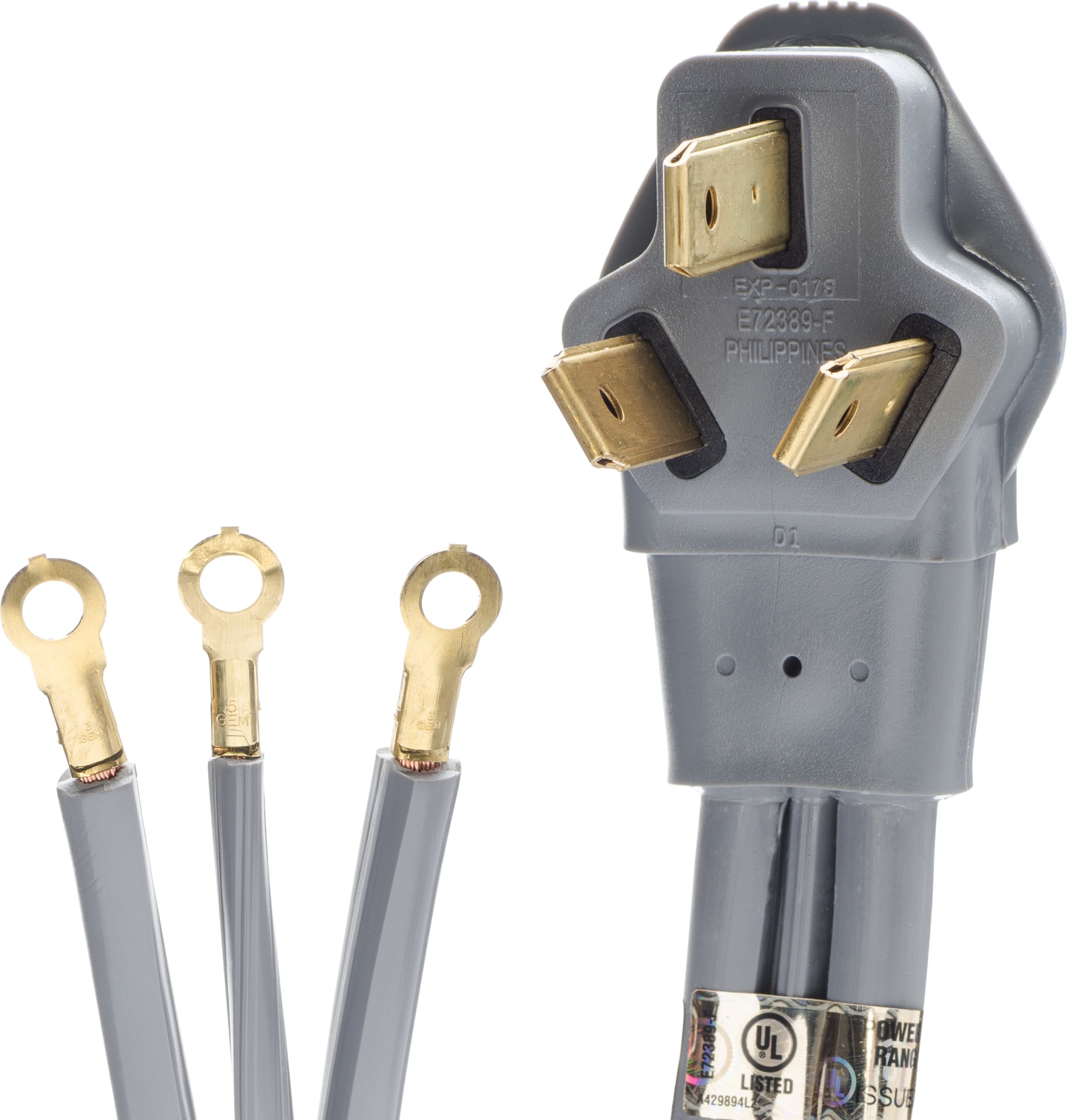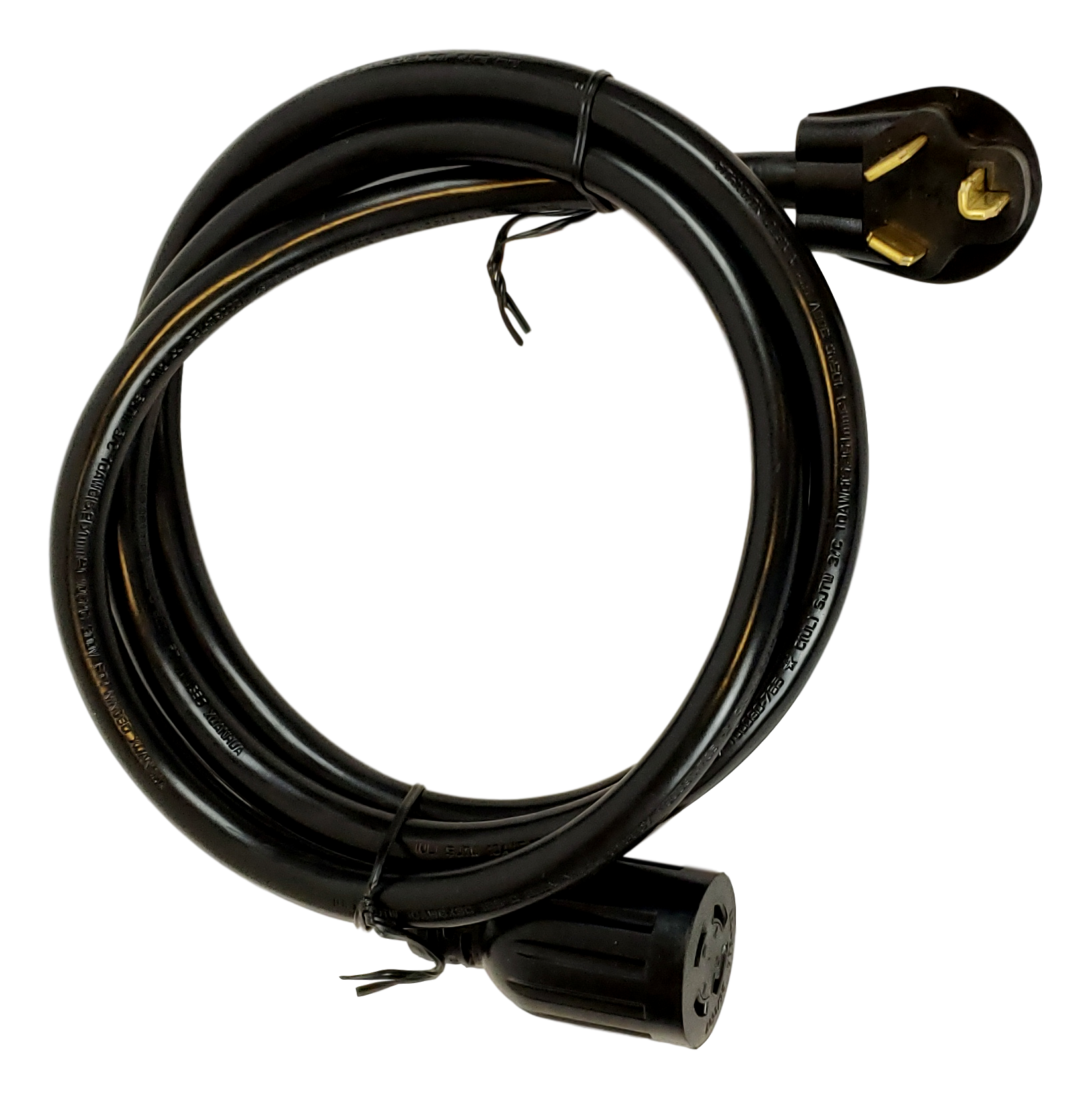Unveiling The Secrets: Discover The Power Of The 3 Prong Range Cord
Have you ever wondered why your range cord has three prongs instead of two? It’s not just for safety. The third prong plays a crucial role in the proper functioning of your range and prevents electrical hazards. Let’s dive into the secrets of the 3 prong range cord and unveil its power.
When you plug your range into a standard 120-volt outlet, the two prongs provide the electricity needed to power the range’s heating elements. However, a third prong is essential for grounding the range. Grounding creates a path for excess electricity to flow away from the range and into the ground, preventing it from accumulating and causing electrical shock.

Grounding also helps protect your range from electrical surges, which can damage sensitive electronic components. Without proper grounding, the range may experience malfunctions, shorten its lifespan, and pose safety hazards. Therefore, it’s crucial to ensure that the third prong of the range cord is connected to a properly grounded outlet.
The 3 prong range cord is a vital safety feature that helps prevent electrical hazards. It provides a path for excess electricity to flow away from the range and ensures that the range is properly grounded. By understanding the power of the 3 prong range cord, you can ensure the safe operation of your range.
Unveiling The Secrets of the 3 Prong Range Cord
My firsthand experience with the importance of the 3 prong range cord came when I moved into a new apartment. After connecting my range to the outlet, I noticed that it wasn’t working correctly. The heating elements would only turn on intermittently, and the range would sometimes emit a buzzing sound.

Initially, I thought that it might be a faulty range. However, after some troubleshooting, I discovered that the outlet I was using was not properly grounded. As soon as I used an adapter to connect the range to a grounded outlet, it started functioning perfectly.
This experience taught me the crucial role that the 3 prong range cord plays in the safe and proper operation of a range. By providing a path for excess electricity to flow away, the third prong ensures that the range is properly grounded, preventing electrical hazards.
History and Myth of the 3 Prong Range Cord
The 3 prong range cord has a rich history and mythology surrounding its development. In the early days of electricity, most homes and businesses used ungrounded electrical systems. However, as electrical appliances became more common, the need for better grounding became apparent.

In the 1930s, the National Electrical Code (NEC) began requiring grounding for electrical systems. This requirement was prompted by the increasing number of electrical accidents caused by ungrounded appliances. The 3 prong range cord was developed to comply with this new code and ensure the safe operation of ranges.
Over the years, various myths have circulated about the 3 prong range cord. Some people believe that the third prong is not necessary and that it is only used to increase the cost of range cords. Others claim that the third prong can actually be dangerous and that it should be removed to prevent electrical shocks.
Hidden Secrets of the 3 Prong Range Cord
Beyond its safety features, the 3 prong range cord holds some hidden secrets. One lesser-known function of the grounding prong is that it can help reduce electromagnetic interference (EMI). EMI is a type of electrical noise that can interfere with the operation of other electronic devices.

By providing a path for the EMI to flow away from the range, the grounding prong helps to reduce its impact on other devices. This can improve the performance of radios, televisions, and other electronics that are located near the range.
Another hidden secret of the 3 prong range cord is that it can help to extend the life of the range. By preventing electrical surges and other hazards, the grounding prong helps to protect the sensitive electronic components in the range.
Recommendation of the 3 Prong Range Cord
It is highly recommended that you use a 3 prong range cord for your range. A 3 prong range cord is the safest and most effective way to provide grounding for your range and prevent electrical hazards.

When purchasing a range cord, look for a product that is certified by a reputable safety organization, such as UL or ETL. This certification ensures that the cord has been tested and meets safety standards.
It is also important to ensure that the outlet you are using is properly grounded. If you are unsure whether your outlet is grounded, you can use a voltage tester to check.
Unveiling the Secrets of the 3 Prong Range Cord
The 3 prong range cord is an essential safety feature that helps to prevent electrical hazards in homes and businesses. By providing a path for excess electricity to flow away from the range, the third prong ensures that the range is properly grounded and protected from electrical surges.

When using a range, it is crucial to ensure that the range is properly grounded. This can be done by connecting the range to a grounded outlet using a 3 prong range cord. Failure to properly ground the range can result in electrical hazards, such as electrical shock and fire.
Tips On Unveiling The Secrets Of The 3 Prong Range Cord
Here are some tips for using a 3 prong range cord safely and effectively:
/how-to-connect-a-range-cord-1152254-03-91c6b6b2c8a1484d827fef6ceaf28c82.jpg)
- Always use a 3 prong range cord that is certified by a reputable safety organization, such as UL or ETL.
- Make sure that the outlet you are using is properly grounded.
- Do not remove the third prong from the range cord.
- If the range cord becomes damaged, replace it immediately.
Unveiling The Secrets Of The 3 Prong Range Cord
The 3 prong range cord is an important safety feature that helps prevent electrical hazards. By ensuring that the range is properly grounded, the 3 prong range cord helps to protect you, your family, and your home.

Always use a 3 prong range cord for your range and make sure that the outlet you are using is properly grounded. By following these simple tips, you can help to prevent electrical hazards and ensure the safe operation of your range.
Fun Facts About Unveiling The Secrets Of The 3 Prong Range Cord
Here are some fun facts about the 3 prong range cord:
- The third prong of the range cord is sometimes called the “grounding prong.”
- The grounding prong is required by the National Electrical Code (NEC).
- The grounding prong helps to protect you from electrical shock.
- The grounding prong also helps to prevent electrical fires.
Unveiling The Secrets Of The 3 Prong Range Cord: A How-To Guide
Here is a simple guide to using a 3 prong range cord:
- Plug the 3 prong range cord into a properly grounded outlet.
- The grounding prong should be connected to the outlet’s grounding terminal.
- Make sure that the range cord is not damaged.
- If the range cord is damaged, replace it immediately.
Unveiling The Secrets Of The 3 Prong Range Cord: What If
What if you do not use a 3 prong range cord?
Using a range without a 3 prong range cord can be dangerous. The range may not be properly grounded, which could lead to electrical hazards, such as electrical shock and fire.
It is important to always use a 3 prong range cord for your range. By doing so, you can help to prevent electrical hazards and ensure the safe operation of your range.
Unveiling The Secrets Of The 3 Prong Range Cord: Listicle
Here are some reasons why you should use a 3 prong range cord:
- To prevent electrical hazards.
- To protect you from electrical shock.
- To prevent electrical fires.
- To ensure the safe operation of your range.
Questions And Answers About Unveiling The Secrets Of The 3 Prong Range Cord
- What is the purpose of the 3 prong range cord?
- Is it safe to use a range without a 3 prong range cord?
The 3 prong range cord provides a path for excess electricity to flow away from the range, ensuring that the range is properly grounded and protected from electrical surges.
No, it is not safe to use a range without a 3 prong range cord. Using a range without a